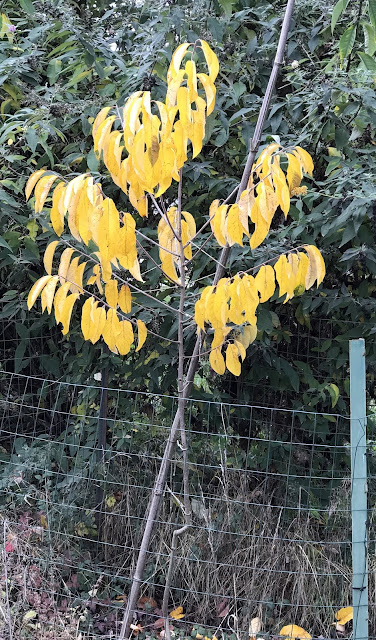Here is an update on the bearded iris garden. For the most part, bearded irises are left unattended, no maintenance, to fend for themselves. I've seen many clumps like that around town, and they seem to grow and bloom just fine. In fact, in years gone by, I had many clumps that had about that treatment.
However, they were difficult to grow at first in the Battle Ground garden. So last year, I dug up my remaining clumps, and planted them haphazardly along the edge of the woods. They were in poor soil, full sun, and had essentially no maintenance. This year, those irises did very well, grew sturdy and strong. A few bloomed this Spring, but most did not.
So this summer, I developed a renewed interest. I converted two vegetable garden beds to bearded iris. This bed has grown sweet corn (last year), and garlic and onions (this year). It's not the best spot, and deer hang out here. Deer do not eat bearded iris plant's but they do walk among them, sometimes smashing them or their soil.
I went around the woods edge, digging up many of the clumps that I had deposited there in past years, and replanted them into this new bed. I also bought a number of iris rhizomes, mainly by mail order.
Here is how the beds look now. I don't intend to over-nourish them, but I did add crushed eggshells to the soil. That's the granular-looking white specks. I have been hoeing weeds, using a shallow stirrup hoe. So far, of the new plants, one developed crown rot. I promptly removed that plant, threw it out, and replaced the soil with fresh soil from an annual flower bed.
Over the past week, I cut off all of the leaves from the "rescued" irises. Those leaves were droopy and had brown streaks or brown spots. For the newly purchased rhizomes, I have not cut off the leaves yet. Those leaves look sturdy and green. I want to give them all the chance I can to photosynthesize. When they start to discolor, those leaves will also go.
After hoeing, there are seeds in the center of some clumps or adjacent to rhizomes. Those will need hand pulling.
Not surprising, the last purchased rhizomes don't look like much. There is minimal top growth. They may still survive the winter and grow nice plants next year, but for those, flowers next spring seem unlikely.
So far, so good.
 |
| Newly Purchased Iris Rhizomes, Planted in July and Early August. 11.1.18 |
 |
| "Rescued" Clumps of Bearded Irises, Planted In August And September. 11.1.18 |
 |
| Newly Purchased Bearded Iris Rhizomes, Planted in September. 11.1.18 |























